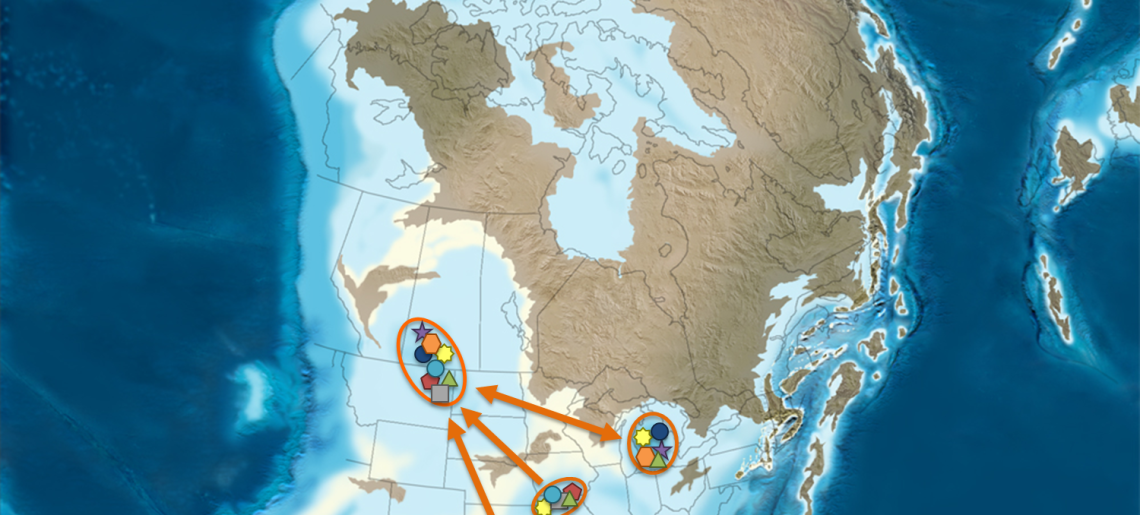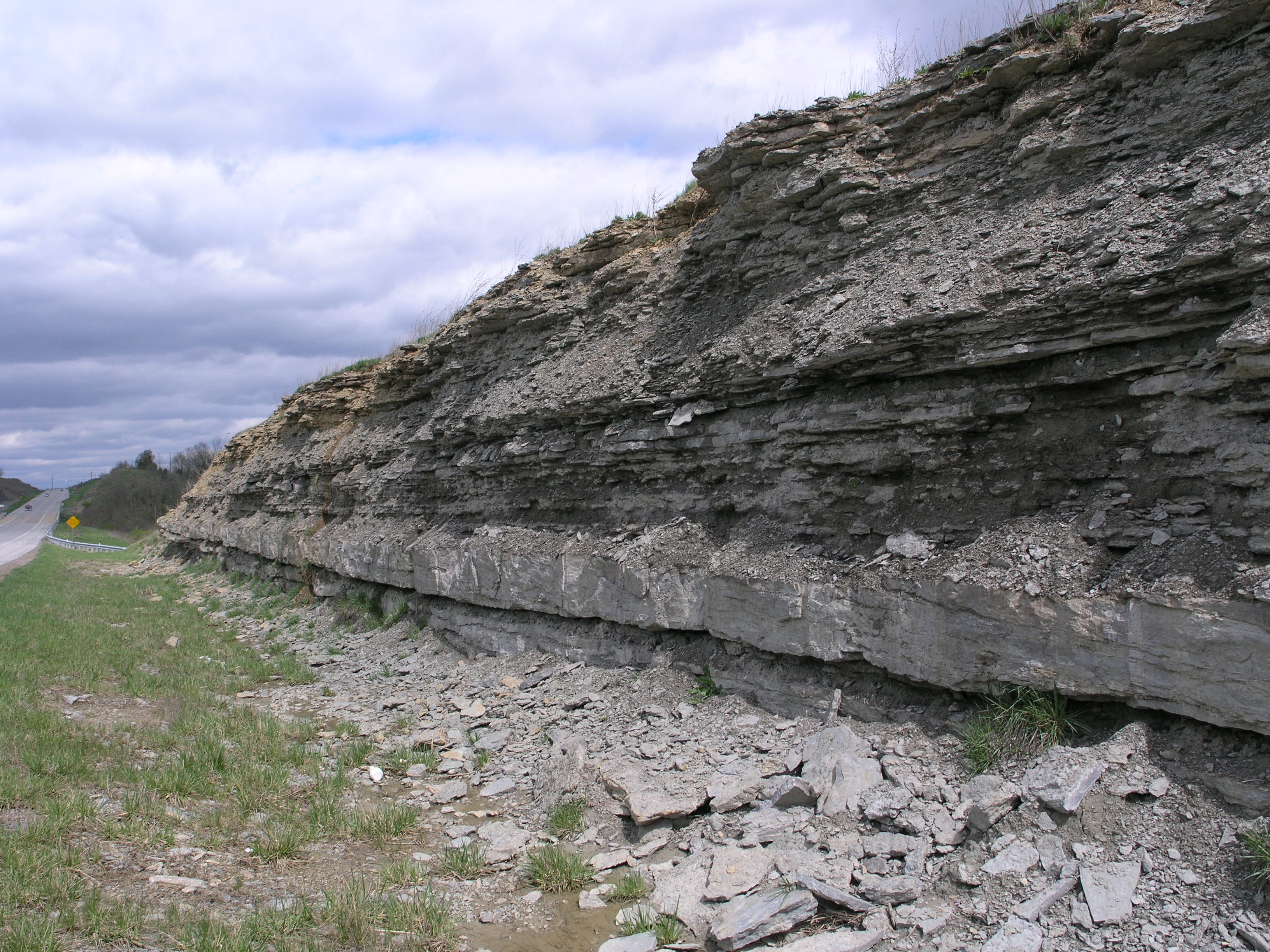
The introduction of non-native species is a major threat to modern biodiversity. However, the impact of modern invasive species can only be directly observed over years to decades. Similar invasions, however, have occurred in the geologic past when a species that evolved with an ecosystem later disperses into a formerly isolated ecosystem. These ancient invasions provide the opportunity to examine the long-term impact of invasive species.
Our work has primarily focused on examining the impact of species invasions within the epicontinental seas. The results of these studies indicate that species invasions can depress speciation, particularly speciation via vicariance, contribute to extinction of specialist taxa, and promote the homogenization of faunas by ecological generalists. However, dispersal is also an important process in the generation of diversity if dispersal and isolation occur cyclically.
Representative publications:
Stigall, A.L. In press (Spring 2016). Invasive species and speciation. In Allmon, W. and Yaccobucci, M.M., Species in the Fossil Record. Chicago University Press.
Stigall, A.L. 2014. When and how do species achieve niche stability over long time scales? Ecography, 37: 1123-1132.Online
Stigall, A.L. 2013. Analyzing links between biogeography, niche stability, and speciation: The impact of complex feedbacks on macroevolutionary patterns. Palaeontology, 56(6): 1225-1238. Online
Wright, D.F. & Stigall, A.L. 2013. Geologic drivers of Late Ordovician faunal change in Laurentia: investigating links between tectonics, speciation, and biotic invasions. PLoS One, 8(7): e68353. Open Access
Stigall, A.L. 2012. Invasive species and evolution. Evolution: Education and Outreach, 5: 526-533. Open Access
Stigall, A.L. 2012. Speciation collapse and invasive species dynamics during the Late Devonian “Mass Extinction” GSA Today, 22(1): 4-10. Online
Malizia, R.W. & Stigall, A.L. 2011. Niche stability in Late Ordovician articulated brachiopod species before, during, and after the Richmondian Invasion. Palaeogeography, Palaeoclimatology, Palaeoecology, 311: 154-170. Online
Stigall, A.L. 2010. Invasive species and biodiversity crises: Testing the link in the Late Devonian. PLoS ONE, 5(12): e15584.Open Access
Stigall, A.L. 2010. Using GIS to assess the biogeographic impact of species invasions on native brachiopods during the Richmondian Invasion in the Type-Cincinnatian (Late Ordovician, Cincinnati region). Palaeontologia Electronica, 13: 5A, 19 p. Online
Stigall Rode, A.L. & Lieberman, B.S. 2005. Using environmental niche modelling to study the Late Devonian biodiversity crisis, p. 93-180. In D. J. Over, J. R. Morrow & P.B. Wignall (eds.), Understanding Late Devonian and Permian-Triassic Biotic and Climatic Events: Towards an Integrated Approach. Developments in Palaeontology and Stratigraphy, Elsevier, Amsterdam. PDF
Rode, A.L. & Lieberman, B.S. 2004. Using GIS to unlock the interactions between biogeography, environment, and evolution in Middle and Late Devonian brachiopods and bivalves. Palaeogeography, Palaeoclimatology, Palaeogeography, 211(3-4): 345-359. Online
This research has been supported by grants from the National Science Foundation, American Chemical Society’s Petroleum Research Fund, and Ohio University.




